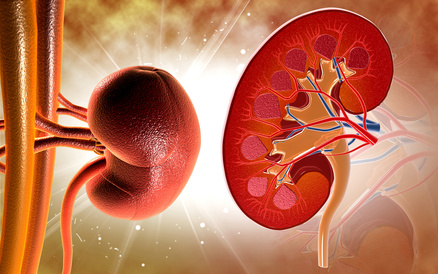Chronic kidney disease, even in moderate or severe stages before dialysis, is associated with an increased risk of aortic stenosis according to this work recently published in J Am Coll Cardiol.
 Both share several risk factors, something that complicates the identification of the association between these diseases due to multiple confounding variables.
Both share several risk factors, something that complicates the identification of the association between these diseases due to multiple confounding variables.
The study included 1,121,875 Stockholm citizens without a history of aortic stenosis from the SCREAM (Stockholm CREAtinine Measurements) project. The glomerular filtration rate (mL/min/1.73 m2) was calculated from serum creatinine. The association between glomerular filtration and aortic stenosis incidence was estimated with multivariable Cox proportional hazards models.
Read also: EXCEL Sub-Analysis: Angioplasty vs. Surgery in Chronic Renal Insufficiency.
The sensitivity analysis included possible reverse causation bias (the hypothesis that aortic stenosis causes renal insufficiency) by excluding diagnosis in the first 6 months or 2 years after enrollment and excluding patients with comorbid heart failure.
Mean patient age was 50 years and the glomerular filtration rate was 96 mL/min/1.73 m2.
During a 5.1-year follow-up, 5858 (0.5%) patients developed aortic stenosis (incidence rate: 1.13/1000 years-patient).
Read also: Subclavian and Axillary Access for TAVR: a Valid Alternative.
Compared with patients whose filtration rate remained above 90 mL/min/1.73 m² (incidence rate: 0.34/1000 years-patient), as the glomerular filtration rate went down, the incidence of aortic stenosis went up. For patients with a filtration rate between 60 and 90 mL/min/1.73 m², the hazard ratio (HR) was 114 and the 95% confidence interval (CI) was 1.05 to 1.25; for patients with a filtration rate between 45 and 59 mL/min/1.73 m², the HR was 1.17 and the 95% CI was 1.05 to 1.30; for those between 30 and 44, the HR was 1.22 and the 95% CI was 1.07 to 1.39; and finally, for patients whose glomerular filtration was below 30, the HR was 1.56 and the 95% CI was 1.29 to 1.87.
Conclusion
Renal impairment, from moderate stages upwards, is associated with an increased risk of aortic stenosis.
Original title: Kidney Dysfunction and the Risk of Developing Aortic Stenosis.
Reference: Georgios Vavilis et al. J Am Coll Cardiol 2019;73:305-14.
Get the latest scientific articles on interventional cardiologySubscribe to our weekly newsletter
We are interested in your opinion. Please, leave your comments, thoughts, questions, etc., below. They will be most welcome.





